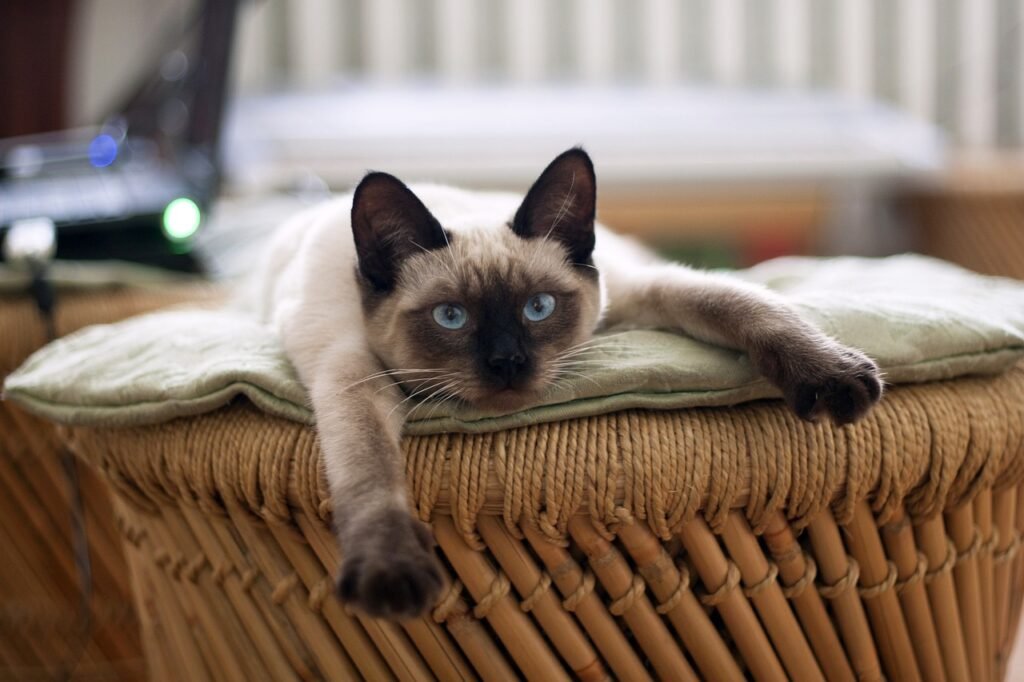
Cats are often revered for their self-sufficient grooming habits and meticulous cleanliness. However, there are numerous myths surrounding cat hygiene that can mislead cat owners and potentially impact the health and well-being of their feline companions. In this article, we will explore some of the most common myths about cat hygiene, providing clarity and insights to ensure your cat remains healthy and clean.
Myth 1: Cats Don’t Need Baths
One of the most pervasive myths is that cats never need baths because they groom themselves. While it is true that cats are adept at grooming, there are circumstances where a bath is necessary. Cats can get into situations where their fur becomes sticky, oily, or contaminated with harmful substances. Additionally, some cats suffer from skin conditions or allergies that require regular bathing with medicated shampoos.
Bathing a cat should be done with care, using cat-specific shampoos and ensuring the water temperature is comfortable. It’s important to introduce your cat to baths gradually and ensure a positive experience to prevent stress or fear associated with bathing.
Myth 2: Cats Clean Themselves Perfectly
Though cats are known for their grooming skills, they don’t always reach every part of their bodies effectively. Overweight cats, for example, might struggle to groom certain areas, leading to matted fur and potential skin issues. Long-haired breeds like Persians and Maine Coons can also develop tangles and mats that require human intervention.
Regular brushing can help prevent these problems by removing loose fur, reducing shedding, and preventing the formation of hairballs. It also provides an opportunity to inspect your cat’s skin for any signs of parasites, injuries, or abnormalities.
Myth 3: Hairballs Are Normal
Hairballs are often considered a normal part of a cat’s life, but frequent hairballs can be a sign of excessive grooming or digestive issues. Cats ingest fur while grooming, and while some of it passes through their digestive system, the rest can form hairballs.
To minimize hairballs, ensure your cat’s diet is rich in fiber, which can help move ingested fur through the digestive tract. Regular grooming can also reduce the amount of loose fur available for ingestion. If hairballs persist, consult your veterinarian to rule out underlying health issues such as gastrointestinal problems or skin conditions that might be causing excessive grooming.
Myth 4: Cats’ Mouths Are Cleaner Than Humans’
The myth that cats’ mouths are cleaner than humans’ is not entirely accurate. While a cat’s mouth does contain different bacteria than a human’s, it can still harbor harmful microorganisms. Cats can contract and spread diseases such as gingivitis and periodontal disease, which can lead to serious health issues if left untreated.
Regular dental care, including tooth brushing and providing dental treats or toys, can help maintain oral hygiene. It is also advisable to schedule regular veterinary dental check-ups to ensure your cat’s teeth and gums remain healthy.
Myth 5: Litter Boxes Only Need Cleaning Once a Week
A common misconception is that litter boxes only require weekly cleaning. In reality, litter boxes should be scooped daily to remove waste and maintain a clean environment. Cats are fastidious creatures and may refuse to use a dirty litter box, leading to inappropriate elimination behaviors.
In addition to daily scooping, litter should be changed entirely and the box cleaned with mild soap and water at least once a month. This helps prevent odors and reduces the risk of urinary tract infections or other health issues that can arise from a dirty litter box.
Myth 6: Indoor Cats Don’t Need Flea Prevention
Another myth is that indoor cats are not at risk for fleas. Fleas can find their way indoors through various means, such as on humans, other pets, or even through open windows and doors. Once inside, fleas can quickly infest an indoor cat.
Consistent flea prevention, using veterinarian-recommended products, is crucial even for indoor cats. This includes regular application of topical treatments or oral medications that prevent fleas from breeding and spreading.
Myth 7: Cats Don’t Need Their Nails Trimmed
Some believe that cats naturally take care of their nails through scratching and don’t require trimming. While scratching does help keep nails healthy, it may not be enough to prevent overgrowth. Overgrown nails can cause pain, injury, and damage to furniture.
Regular nail trimming, every two to four weeks, can help maintain nail health. Introducing this practice early in a cat’s life can help them become accustomed to the process, making it easier over time.
Myth 8: Cats Don’t Get Dirty Ears
Cat owners might assume that their cats’ ears remain clean without intervention, but this is not always the case. Cats can accumulate dirt, wax, and even ear mites, which can lead to ear infections if not addressed.
Regularly check your cat’s ears for signs of dirt, wax, or redness. Clean them gently with a veterinarian-recommended solution and cotton balls. If you notice any signs of infection, such as a strong odor, discharge, or your cat frequently scratching their ears, consult your veterinarian.
Myth 9: Cats Don’t Need Regular Vet Check-ups
Some cat owners may think that as long as their cat appears healthy, there is no need for regular veterinary visits. However, cats are masters at hiding illness, and regular check-ups are essential for early detection of potential health issues.
Annual veterinary visits allow for vaccinations, dental exams, and overall health assessments. Senior cats or those with chronic conditions may require more frequent visits. Regular check-ups can significantly contribute to your cat’s long-term health and well-being.
Myth 10: Cats Don’t Need Special Diets
Another myth is that all cats can thrive on the same diet. In reality, cats have unique dietary needs based on their age, health status, and lifestyle. Kittens, adults, and senior cats all require different nutritional balances to support their growth, maintenance, and aging processes.
Consult with your veterinarian to determine the most appropriate diet for your cat, considering factors such as weight, activity level, and any medical conditions. A balanced diet supports not only overall health but also skin and coat condition, which is crucial for maintaining good hygiene.
Conclusion
Understanding the facts about cat hygiene is crucial for ensuring your feline friend remains healthy and comfortable. By debunking these common myths, cat owners can make informed decisions about grooming, diet, and healthcare that contribute to their pet’s overall well-being. Regular grooming, proper diet, consistent veterinary care, and a clean living environment are integral components of effective cat hygiene. By dispelling these myths, we can provide better care for our cats, ensuring they lead happy, healthy lives.
#ChatGPT assisted in the creation of this article.






